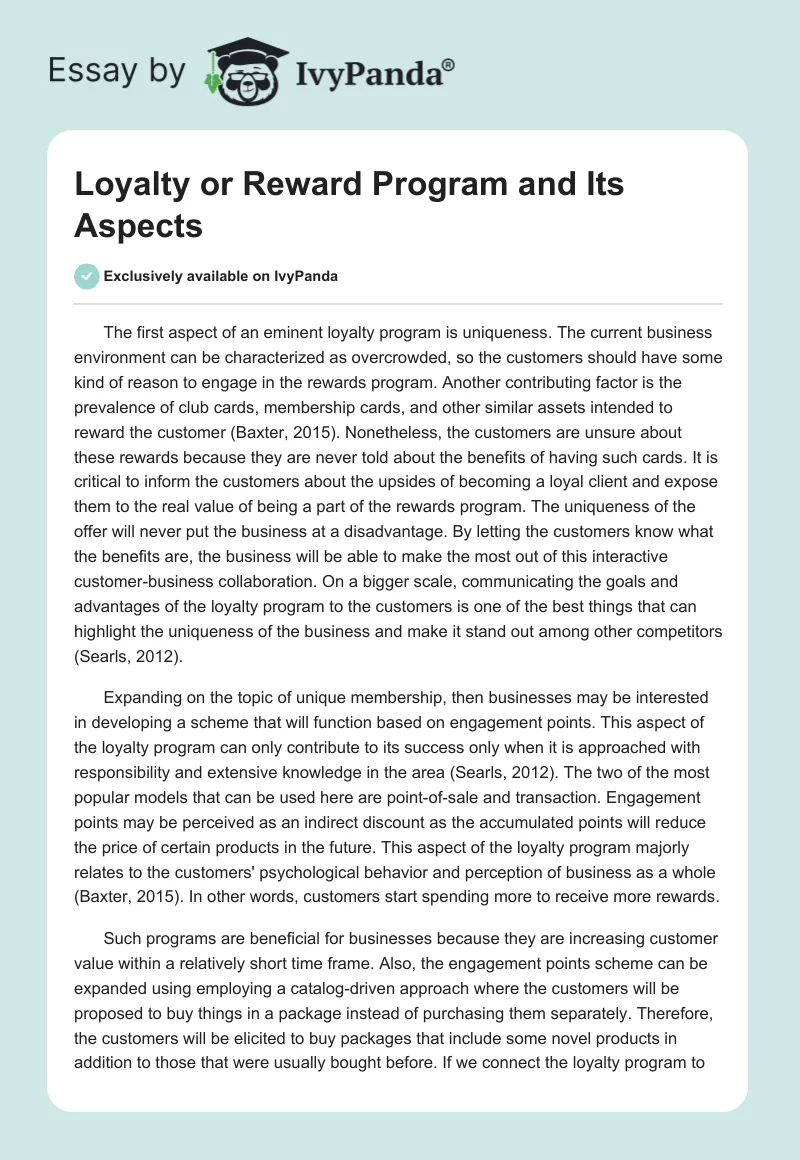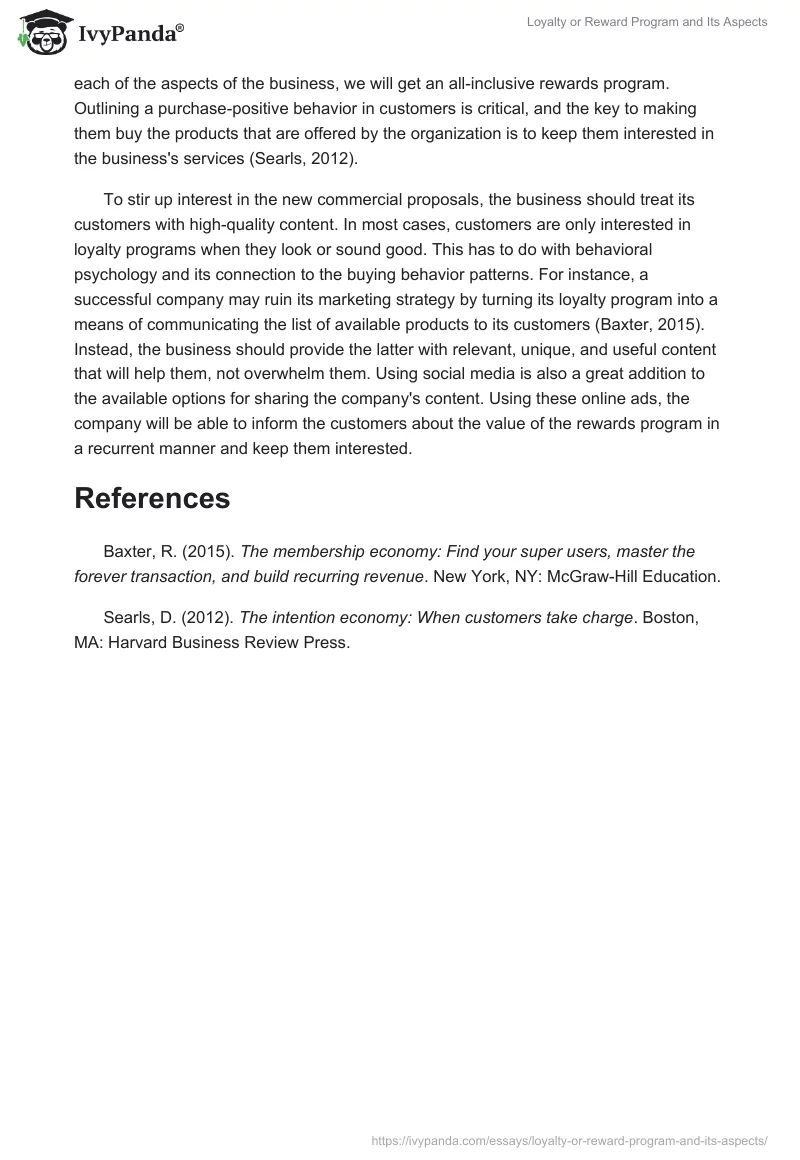The first aspect of an eminent loyalty program is uniqueness. The current business environment can be characterized as overcrowded, so the customers should have some kind of reason to engage in the rewards program. Another contributing factor is the prevalence of club cards, membership cards, and other similar assets intended to reward the customer (Baxter, 2015). Nonetheless, the customers are unsure about these rewards because they are never told about the benefits of having such cards. It is critical to inform the customers about the upsides of becoming a loyal client and expose them to the real value of being a part of the rewards program. The uniqueness of the offer will never put the business at a disadvantage. By letting the customers know what the benefits are, the business will be able to make the most out of this interactive customer-business collaboration. On a bigger scale, communicating the goals and advantages of the loyalty program to the customers is one of the best things that can highlight the uniqueness of the business and make it stand out among other competitors (Searls, 2012).
Expanding on the topic of unique membership, then businesses may be interested in developing a scheme that will function based on engagement points. This aspect of the loyalty program can only contribute to its success only when it is approached with responsibility and extensive knowledge in the area (Searls, 2012). The two of the most popular models that can be used here are point-of-sale and transaction. Engagement points may be perceived as an indirect discount as the accumulated points will reduce the price of certain products in the future. This aspect of the loyalty program majorly relates to the customers’ psychological behavior and perception of business as a whole (Baxter, 2015). In other words, customers start spending more to receive more rewards.
Such programs are beneficial for businesses because they are increasing customer value within a relatively short time frame. Also, the engagement points scheme can be expanded using employing a catalog-driven approach where the customers will be proposed to buy things in a package instead of purchasing them separately. Therefore, the customers will be elicited to buy packages that include some novel products in addition to those that were usually bought before. If we connect the loyalty program to each of the aspects of the business, we will get an all-inclusive rewards program. Outlining a purchase-positive behavior in customers is critical, and the key to making them buy the products that are offered by the organization is to keep them interested in the business’s services (Searls, 2012).
To stir up interest in the new commercial proposals, the business should treat its customers with high-quality content. In most cases, customers are only interested in loyalty programs when they look or sound good. This has to do with behavioral psychology and its connection to the buying behavior patterns. For instance, a successful company may ruin its marketing strategy by turning its loyalty program into a means of communicating the list of available products to its customers (Baxter, 2015). Instead, the business should provide the latter with relevant, unique, and useful content that will help them, not overwhelm them. Using social media is also a great addition to the available options for sharing the company’s content. Using these online ads, the company will be able to inform the customers about the value of the rewards program in a recurrent manner and keep them interested.
References
Baxter, R. (2015). The membership economy: Find your super users, master the forever transaction, and build recurring revenue. New York, NY: McGraw-Hill Education.
Searls, D. (2012). The intention economy: When customers take charge. Boston, MA: Harvard Business Review Press.


